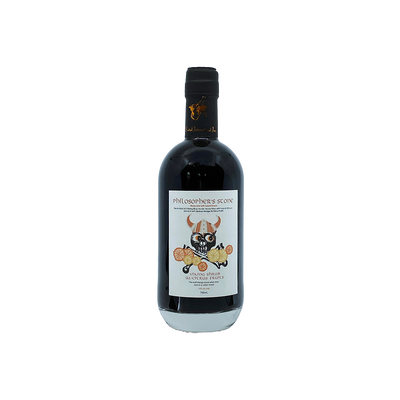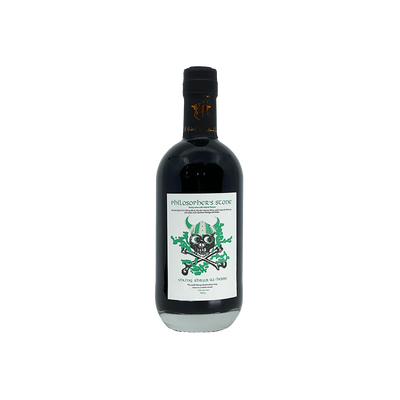Flavored Mead
What is Flavored Mead?
Flavored mead is a specific type of Mead that incorporates additional ingredients beyond the traditional honey, water, and yeast base. These additions can include fruits, spices, herbs, hops, or other botanicals that are added during fermentation or aging to create distinct flavor profiles. What defines flavored mead is this intentional inclusion of secondary ingredients that complement and enhance the natural honey character, resulting in varieties like metheglin (spiced mead), melomel (fruit mead), or cyser (apple mead).
Learn More About Flavored Mead
What makes Flavored Mead unique?
Flavored mead stands apart from traditional honey wine by incorporating fruits, spices, herbs, or other botanicals during fermentation or aging, creating complex flavor profiles that go far beyond the simple honey-water-yeast foundation. While traditional mead showcases the pure essence of honey and specialty meads like cyser (apple) or pyment (grape) follow specific historical formulations, flavored meads give meadmakers complete creative freedom to experiment with everything from exotic tropical fruits to warming winter spices. This flexibility allows modern producers to craft seasonal releases, unique one-off batches, and innovative combinations that can appeal to wine drinkers, beer enthusiasts, and cocktail lovers alike.
How is Flavored Mead Made?
Flavored mead starts with the basic honey-water-yeast foundation, but gets its character through the addition of fruits, spices, herbs, or other ingredients either during fermentation or after. Some meadmakers add their flavoring elements right into the primary fermentation alongside the honey must, allowing the yeast to work with those sugars and compounds from day one. Others prefer a two-stage approach, fermenting a clean honey base first, then introducing flavors during a secondary fermentation or aging period to maintain more control over the final taste profile.
How do you drink Flavored Mead?
Flavored mead shines best when served chilled and neat, allowing you to fully appreciate the honey's natural sweetness alongside whatever fruits, spices, or botanicals the meadmaker has added. While some folks enjoy it on the rocks during warmer months, most mead lovers prefer it straight from the bottle at cellar temperature or slightly chilled, similar to how you'd serve a dessert wine. It works beautifully in cocktails too – try it in place of simple syrup in whiskey sours, or mix berry meads with prosecco for a festive spritz that's perfect for autumn gatherings, holiday parties, or cozy winter evenings by the fire.
How do I choose a good Flavored Mead?
Start by considering the honey base—wildflower honey creates a versatile foundation that won't compete with added flavors, while stronger varieties like buckwheat or orange blossom can add complexity but may overwhelm delicate fruits. Match your mead's sweetness level to your intended use: drier meads work beautifully in cocktails where you want the honey character without cloying sweetness, while sweeter versions shine when sipped neat or paired with cheese. If you're planning to mix cocktails, choose fruit-forward meads with bright acidity like cherry or raspberry, which balance well with spirits, but avoid heavily spiced varieties that can muddle your drink's flavor profile.
Nutritional Information
Typical Calorie Range per Ounce: 20-35 calories
Typical Carbohydrate Range per Ounce: 2-6 grams
Typical Sugar Range per Ounce: 1-5 grams
Typically Gluten Free: Yes
Flavored meads generally contain higher sugar and carbohydrate levels than their traditional counterparts due to added fruits, spices, or sweeteners used in the flavoring process. The calorie content varies significantly based on residual sugars and alcohol strength, which can range from 8% to 18% ABV depending on the style.
While mead is traditionally made from honey, water, and yeast—making it naturally gluten-free—some flavored varieties may include additives or flavorings that contain gluten. Always check the detailed product information and contact the meadery directly to confirm gluten-free status, especially if you have celiac disease or severe gluten sensitivity.
Scrolled this far? Your reward? Flavored Mead Trivia!
- Medieval monks created the first flavored meads by accident when bees built hives near monastery herb gardens, naturally infusing the honey with basil, rosemary, and thyme. These "accidental infusions" became so prized that monasteries started deliberately placing beehives among specific plants to create signature flavors that funded entire religious communities.
- The ancient Mayans mixed their honey wine with chocolate and chili peppers over 1,000 years before European colonization, creating what historians now recognize as the world's first spiced mead cocktail. Spanish conquistadors described these drinks as "liquid fire blessed by the gods" in their expedition journals.
- Modern meadmakers use a technique called "cold-pressing" fruits directly into fermenting honey, which preserves volatile compounds that would normally cook off during traditional heating methods. This process creates flavored meads with such intense fruit character that a single sip of cherry mead contains the equivalent essence of eating twelve fresh cherries.
- Ethiopian tej, a honey wine flavored with gesho root, naturally produces psychoactive compounds beyond alcohol that create mild euphoric effects. This biological quirk explains why tej ceremonies remain central to Ethiopian spiritual practices, and why the recipe has remained virtually unchanged for over 2,000 years.
- Commercial flavored mead producers often use "honey terroir" – honey sourced from bees that feed exclusively on single flower types – then match complementary flavors during fermentation. Orange blossom honey gets paired with citrus, while wildflower honey works with berry additions, creating flavor combinations that literally couldn't exist in nature but taste completely harmonious.
Higher-proof spirits can be intense. Mix carefully, taste thoughtfully, and enjoy responsibly.
Gift message (optional)


